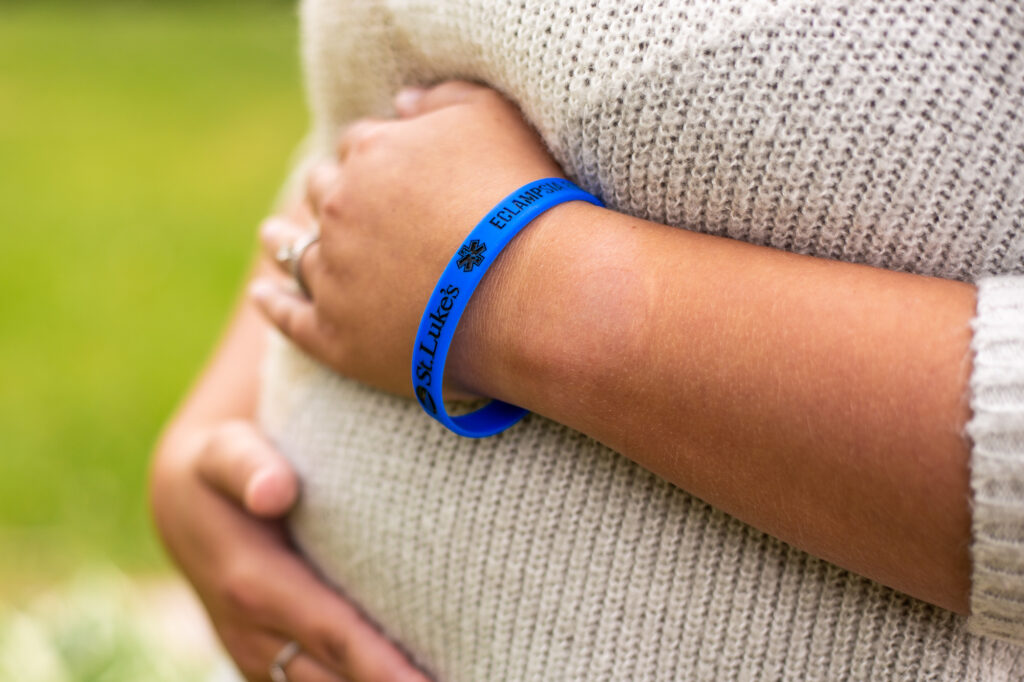
While preeclampsia affects only 5 to 8% of pregnant women, it can be very dangerous. It’s actually the main reason why moms die during pregnancy around the world. That’s why we’re happy to work together with the Minnesota Perinatal Quality Collaborative (MNPQC) to bring the Blue Band Project to our region. This project aims to protect pregnant women who might have preeclampsia before or after giving birth.
Let’s learn more about why this project is really important.
Addressing the Risks: What is Preeclampsia?
When someone has preeclampsia, their blood pressure becomes too high, and they may have swelling in their hands, face or feet. Other symptoms can include headaches, blurry vision and feeling dizzy. This condition affects a mom’s blood pressure and can make them feel very sick. It can also harm the baby’s health.
Providers can help manage preeclampsia by monitoring mom’s health closely and sometimes delivering baby earlier than expected. It’s important for pregnant women to see their doctors regularly to make sure they stay healthy and catch any signs of preeclampsia early.
The Blue Band: A Symbol of Care and Awareness
As part of this special project, obstetric providers at Aspirus St. Luke’s will check pregnant and new moms to see if they might have preeclampsia. If they do, they will be given a blue band to wear on their wrist. This band shows that they have been diagnosed with preeclampsia, so other medical providers can give them the right care when they need it. It’s especially helpful if they have to go to the urgent care or emergency room.
The blue band also helps moms remember to take care of themselves and stay healthy.
 The Journey with the Blue Band
The Journey with the Blue Band
When a patient gets a blue band, they keep it with them throughout their pregnancy and for six weeks after having their baby. This is a really important time because there’s a higher chance of having problems. Once the risk is lower, the patient’s provider will let them know that it’s okay to remove the band.
The Blue Band Project is doing a great job of making sure moms with higher risks are safe and healthy. By using the blue band as a way to show who needs extra care, it helps the doctors and nurses communicate better and make sure moms stay safe. It also gives moms a way to be more involved in their own healthcare journey.
For more information, visit minnesotaperinatal.org/BlueBand.
To make an appointment with Dr. Taylor Swanson




